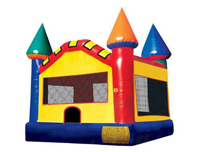If you run your own website but haven’t heard the term “bounce rate”, have a seat. You might be satisfied with the number of people visiting your website, but if the majority of those visitors leave within a few seconds without interacting with any of your content, that’s something you need to deal with.
digital-media.net’s Brad Martens says website visitors will decide whether to stay and interact with your content within the first seven seconds. Give your visitors what they need within that timeframe, and they will be much more likely to investigate further.
But according to Google’s self-proclaimed “analytics evangelist”, Avinash Kaushik, seven seconds could be an optimistic estimate. Kaushik says bounce rate measures the “I came; I puked; I left” phenomenon:
“While metrics like visitors show the number of people who came to your site, bounce rate will tell you how many of those people were unimpressed and left your site without taking any action (not even dignifying the site with a single click!).”
So how do I measure my bounce rate?
Unsurprisingly, Kaushik promotes the use of to measure your website’s bounce rate. Google Analytics is a widely used option that measures up to 5 million page views per month for free.
Here at propertyadguru.com, we use the WordPress plugin Woopra Analytics. Of course, there are plenty of other website analytics tools available, such as Piwik, Clicky and to name just a few. Because there are so many free options available, choosing one that works for your website doesn’t have to be an expensive exercise.
Ok, and how do I improve my bounce rate?
So, you’ve seen your bounce rate and it isn’t pretty. The good news is, there are plenty of things you can do to keep visitors on your website. Here are our top three suggestions:
Focus on where your traffic is coming from. Using your new website analytics tools, you should be able to determine whether visitors are finding your website via search engines, social media, or other websites. You can then start to make changes to ensure you’re attracting the right kinds of visitors. Ask yourself: is my website optimised for the right keywords? Is my display advertising showing up on the right websites?
Consider usability. Can visitors easily navigate your website to find what they need, right from the start? If you’re not sure, ask for some honest feedback from friends and colleagues. You could even add a quick survey to your website allowing users to tell you what they think.
Highlight calls to action. A high bounce rate need not be a tragedy if people are subscribing to your RSS or Twitter feeds, or becoming your fan on Facebook, within those first few seconds. With the Internet becoming more social by the day, it’s important to remember that these are the preferred methods of website interaction for many.
Bursting with ideas on how to improve bounce rates? Let us know your thoughts in our comments.
[Image: hirethings.co.nz]
Related posts:







What is considered a good bounce rate ie : anything below xxxx would be considered acceptable?
Thanks
Lynne
Hi Lynne,
Thanks for your question. There doesn’t seem to be a standard definition of what a “good” or “bad” bounce rate is. That said, the article by Avinash Kaushik I reference above gives an example of a 77 percent bounce rate, which Kaushik clearly thinks is too high.
If you visit Kaushik’s blog (http://www.kaushik.net/avinash/) and find the entry titled “Excellent Analytics Tip #11: Measure Effectiveness Of Your Web Pages”, he gives his own take on how low a bounce rate should be:
“My own personal observation is that it is really hard to get a bounce rate under 20%, anything over 35% is cause for concern, 50% (above) is worrying. I stress that this is my personal analysis based on my experience, but hopefully it gives you a feel for what you are shooting for.”
That’s the word from Google’s “analytics evangelist”, but I would add that your own definition of a good bounce rate would need to take into account your website’s aims, and other metrics such as subscribers to newsletters and RSS feeds.
Hope that answers your question - thanks for reading!